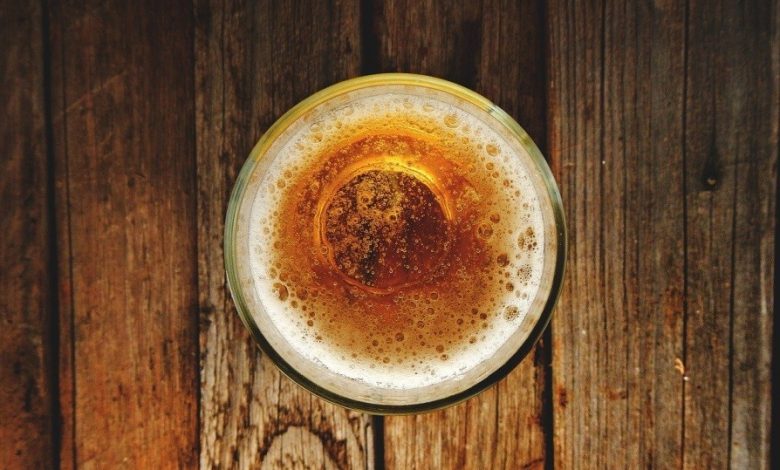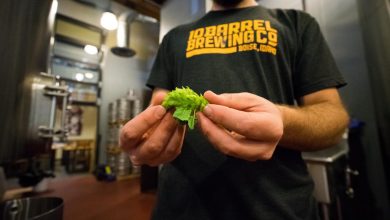Brewing High Gravity Beers

You’re probably familiar with the term gravity. In physics, it is the force that keeps the earth and everything in it from flying off into space. However, gravity, as it relates to beers, is a different concept.
In beer making, gravity is the measure of a liquid’s density, compared to water, at various stages of the fermentation process.
Thus, gravity refers to the number of fermentable sugars available during the brewing process. Brewers read the gravity of the beer wort before yeast gets added to it. This first reading is called the original gravity (OG) and has numbers like 15 degrees Plato.
The original gravity of the wort will determine the alcohol content of the finished beer. Higher OGs will yield beers with high alcohol, and beers with low alcohol content have worts of low original gravity.
Simply put, a high gravity beer is a beer with high ABV (alcohol by volume).
High Gravity Brewing
High gravity brewing is a term used to refer to the act of creating worts with high initial gravity, such that after brewing, it results in beers with high alcohol levels.
A wort of normal gravity ranges from 10 to 13 degrees Plato and will result in a beer having four to six percent ABV. A wort is of high gravity when it ranges between 14 to 17 degrees Plato. Such a wort will result in an ABV of six to eight percent.
Two possible reasons could necessitate the need for high gravity brewing. The first reason is to produce a style of beer with high alcohol content, such as British-style Barleywine. These types of beers with high alcohol aren’t usually mass-produced.
The other reason is to meet production demands when the existing brewing capacity doesn’t suffice. To do this, the brewer may make very high gravity worts, say 19 degrees on the Plato scale, which will result in about 10 percent ABV.
The brewer then dilutes with deoxygenated water to reduce ABV to average strengths and simultaneously increases the volume of beer. This practice is not uncommon amongst major brewing companies and some craft breweries.
Factors to Consider in High Gravity Brewing
As discussed earlier, high gravity brewing, in theory, is reasonably straight forward. Still, it differs from the standard brewing process and is technically demanding. Homebrewers attempting high gravity brewing should bear the following in mind:
Style of Beer
High gravity brewing is most effective when producing medium to low strength beers, as this is easily achievable with dilution.
High gravity brewing is impractical for strong beers, such as German bock or Belgian tripel. Since these beers depend on all the gravity obtainable from the malt, dilution presents no benefits. Also, brewing yeasts’ alcohol tolerance limits make it nigh impossible to brew beers of more than 12 percent ABV for dilution into high gravity beers.
Dilution
There’s only so much water you can add to a beer before it gets watered-down. A small amount of water added into the beer will go almost unnoticed.
The effects of 20 percent dilution, with adjustments made to the recipe, will likely go unrecognized. At the same time, there’ll be a significant increase in the volume of beer. 30 to 40 percent is the generally accepted level of dilution. Anything more and the beer becomes watered-down.
Water Quality
Water for dilution should be clean and sterile. The water shouldn’t contain minerals or elements of any kind, including oxygen and chlorine. Oxygen molecules present in the water will oxidize some constituents of the beer, resulting in tainted flavors and shortened shelf life.
If you’re brewing beer at home, you can prepare the water by boiling and allowing it to cool before dilution. Boiling will effectively strip the water of any oxygen present in it.
Theoretically, the ideal water for diluting beer is carbonated, as it’s oxygen-free and will not affect the carbonation of the beer. However, study the label and note the ingredients. Some carbonated water may contain sweeteners, salts, and other undesirables. Ensure that you’re not inadvertently introducing the very elements you seek to avoid.
Whichever way, boiled or carbonated water, all that matters is that you avoid the introduction of air into it nearly as much as you should prevent microorganisms.
Yeast Limitations
Certain strains of yeast are suited only to low gravity brews, and using such kind of yeasts in high gravity brewing may result in an excessively sweet or malty beer. Alcohol tolerant yeast strains are the best option.
Quantity of Ingredients
You’ll need more of every ingredient – including yeast, hops, and malt – if you aim to conform to the properties of a regularly brewed beer.

Recipe Modifications
There are two approaches to high gravity brewing. The first is by dilution. As discussed above, a 20-percent dilution will likely go unnoticed, as it retains much of the same properties of standard brewing.
For specific styles of beer after dilution, you can make modifications to the recipe to make up for the effects of dilution. Below are some changes you can make to achieve the desired qualities.
Linear Scaling
Despite increasing the volume of the beer, dilution will reduce the beer components, such as ABV. For instance, five gallons at seven percent ABV will reduce to 6.36 percent after a 10-percent dilution, and the new volume will be 5.5 gallons. The 6.36% ABV is the result of this equation:
- CB × (VB ÷ VA) = CA
- CA is the alcohol content after dilution
- VB is the volume before dilution
- VA is the volume after dilution
- CB is the alcohol content before dilution.
You can rework the above equation to dictate the final alcohol content of the beer after dilution. The reworked equation to do this follows below.
- CA × (VA ÷ VB) = CB
Dilution Directions
- Get a container with a capacity higher than the anticipated volume after dilution.
- Add the required amount of deoxygenated water to the racking container, taking care to avoid splashes.
- Put in 3/4 cup of boiled priming sugar for five gallons (adjust the amount of boiled sugar based on the amount you are bottling, i.e., 6/8 for 10 gallons and 9/12 for 15 gallons).
- Add the beer by gently placing the spout below the water’s surface, such that the container fills up from bottom to top.
- Seal the container.
- A 10-percent dilution of five gallons will require 0.5 gallons of water.
Increase Specific Gravity Using Fermentable Ingredients
You’ll need to add more fermentable ingredients like malt, honey, or sugar to amplify the gravity of the beer. Also, take into account the effect each element will have on the finished beer. Honey flavors will arise from using large quantities of honey. Refined sugars may add sucrose flavor and unwanted characteristics to the beer. Malt, sugar, and honey have small yeast content. Therefore, difficulties in the fermentation process will arise in the presence of insufficient yeast nutrient.
Modifications for Color
Dilution will reduce ABV; it’ll also reduce the brilliance of the beer color. If you want the beer to retain a particular color, you’ll need to make up for the effects arising from dilution by altering the specialty grains in the mash.
Malt color unit (MCU) is a simple method to use in determining the color dilution factor. MCUs use malt color as an indicator of beer color. A single color unit is equal to one pound of one degree Lovibond malt.
To obtain the MCUs for any malt type, simply multiply the malt quantity by the malt’s color rating. Sometimes, malt color ratings follow when you buy new ones. While MCUs provide a workable solution, they can not be as accurate as a Lovibond scale. For best results, maintain the same measuring system for the entire process.
Hop Modifications
You can also use the linear scaling equation to calculate the needed hop modifications after dilution. Bittering hops are the exception, as they decrease with higher gravity. In high gravity brewing, you’ll require more bittering hops than usual.

Important Points to Note
Aeration
High gravity brewing requires considerable amounts of yeast. Increased oxygenation of the wort before pitching will encourage yeast to grow. If fermentation stops before reaching the preferred gravity, you may find the addition of fresh yeast helpful.
Pitching
You must have a sufficient quantity of yeast before pitching. Yeast shortages will result in slow fermentation, and the production of congeners is generally thought to be responsible, in part, for hangovers.
It’s also important to note that yeast will adapt to the conditions they are grown in. Yeast grown over time in high gravity worts will thrive in such environments. On the other hand, a yeast that has adapted to low gravity will have trouble adjusting to a high gravity environment; hence, it may not give the preferred results.
Homebrewers may try their hands at high gravity brewing using the suggestions outlined in this article in conjunction with reputable brewing texts and other resources.



